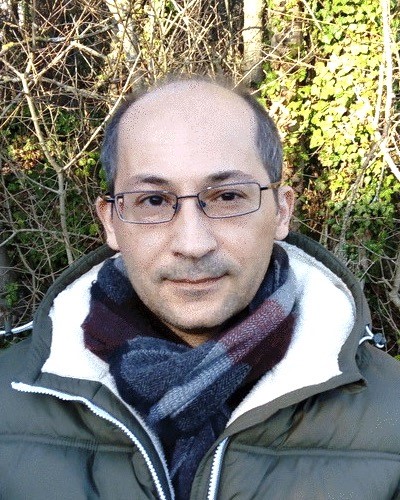 Researcher
Researcher
Department of Biology and Evolution of Marine Organisms
Tel.: +39 081 5833301
E-mail: francesco.ferraro(at)szn.it
Google scholar: https://scholar.google.co.uk/citations?user=Rhvz0kAAAAAJ&hl=en
ERC sectors - Organelle biology and trafficking (LS3_6), Phylogenetics, systematics, comparative biology (LS8_8)
Settori scientifico-disciplinari - Anatomia comparata e citologia (BIO/06), Biologia molecolare (BIO/11)
Lab Members
Astoricchio Emanuele
Research Interests
The endomembrane system plays several roles in the biology of eukaryotic cells. This network of organelles in communication with each other mediates nutrient uptake, recycling or degradation of biopolymers, detection and relay of intra- and extracellular signals, synthesis and transport of enzymes, structural proteins and bioactive molecules (e.g., hormones) to their proper cellular location. My work focuses on the biosynthetic branch of the endomembrane system, the secretory pathway, with a specific focus on the Golgi complex. I am particularly interested in understanding the biological significance of a Golgi organization known as the ribbon. In collaboration with colleagues at SZN and other research institutions, I am investigating this topic using invertebrate model organisms. I am also interested in the development of new tools for basic and translational research. In the context of my main interest, I am designing affinity reagents specific to Golgi membranes with the aim of carrying out Golgi proteomics to understand the dynamics of this organelle.
Marine organisms are more and more being recognized as instrumental in the understanding of biological processes, biodiversity, and in biomedical and biotechnological applications. While we have powerful technologies available for their study, such as next generation sequencing (NGS) to study genomes and transcriptomes, very few affinity reagents such as antibodies, which played and play a fundamental role in the study of the biochemistry and cell biology of classical models (e.g. mouse and drosophila) are available. To bridge this gap, I plan to develop a tech platform for the rapid and low-cost development of affinity reagents for marine organisms’ targets of interests (proteins and other biomolecules), using cell-free approaches and micro-organism producers.
Selected Publications
Page, K.M.*, McCormack, J.J., Lopes-da-Silva, M., Patella, F., Harrison-Lavoie, K., Burden, J.J., Quah, Y.B., Scaglioni, D., Ferraro, F. *, & Cutler, D.F*. (2022). Structure modeling hints at a granular organization of the Golgi ribbon. BMC Biology, 20(1), 111. *co-corresponding author
Ferraro, F. *1, Patella, F. 1, Costa, J.R., Ketteler, R., Kriston‐Vizi, J., & Cutler, D.F*. (2020). Modulation of endothelial organelle size as an antithrombotic strategy. Journal of Thrombosis and Haemostasis, 18(12), 3296-3308. 1co-first and *co-corresponding author
McCormack, J.J.*, Lopes da Silva, M.*, Ferraro, F.*, Patella, F.*, & Cutler, D.F. (2017). Weibel−Palade bodies at a glance. Journal of Cell Science, 130(21), 3611-3617. *equal contribution
Ferraro, F.*, Lopes da Silva, M., Grimes, W., Lee, H.K., Ketteler, R., Kriston-Vizi, J., & Cutler, D.F.* (2016). Weibel-Palade body size modulates the adhesive activity of its von Willebrand Factor cargo in cultured endothelial cells. Scientific Reports, 6(1), 32473. *co-corresponding author
Ferraro, F., Kriston-Vizi, J., Metcalf, D.J., Martin-Martin, B., Freeman, J., Burden, J. J., Westmoreland, D., Dyer, C.E., Knight, A.E., Ketteler, R., & Cutler, D.F. (2014). A two-tier Golgi-based control of organelle size underpins the functional plasticity of endothelial cells. Developmental Cell, 29(3), 292-304.










